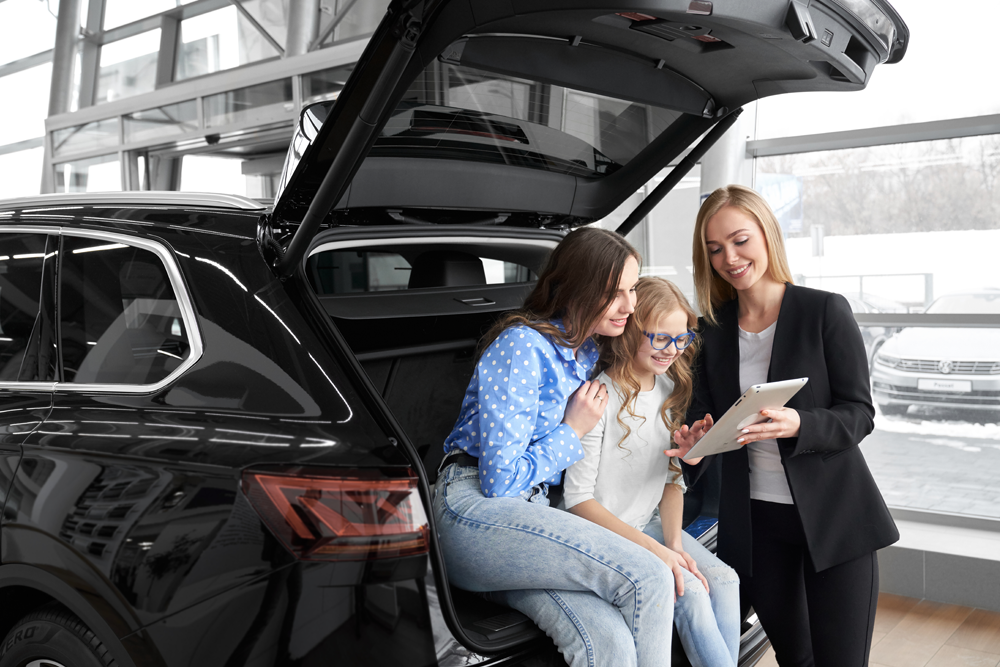The Amazing Ways Augmented Reality Is Transforming Car Retail
2 July 2021
Augmented reality (AR), a technology that overlays virtual information onto the physical environment, is coming to a car showroom near you. Several car dealerships around the world are experimenting with how augmented reality can improve customer service and drive sales.

How Augmented Reality is used in Car Retail
Imagine being able to place a life-size 3D image of the car you are considering in your driveway. The technology is so good that you’d be able to walk around the car, open the door and peer inside it. It offers an intriguing try-it-before-you-buy it opportunity to prospective car buyers.
Car dealerships can use AR on their website to bring augmented-reality experiences to prospective car buyers online. Virtual car tours that even allow people to virtually sit inside the car to see what it might feel like to own it are made possible by this technology.
Jaguar Land Rover is one car company that uses this technology to let consumers virtually test-drive its Velar vehicle. A 360-degree experience of the car’s interior begins when someone clicks on a banner ad. The system also included hotspots where you could tap on the screen to get more information about a particular feature of the vehicle.
Another way augmented reality can support the operations of car dealerships is to enhance the sales process and drive sales conversions. In the car showroom, augmented reality can allow people to change the colour or finishes on a car to find the one that fits their preferences. Hyundai’s AR app runs on iPads and helps sales staff demonstrate the capabilities and features of the manufacturer’s new i30 hatchback that would have ordinarily been difficult to showcase in a showroom environment.
Outside the showroom, consumers can use AR technology to scan a vehicle they see on the street to pull up information about its price and features as well as find out where the closest dealership is. This capability is used by USAA to speed up the car-buying process. The company’s app can access a customer’s financial data to be able to provide personalised financing and insurance quotes.
After a car purchase, augmented reality can be beneficial as well. Educating car owners about the care and maintenance of vehicles becomes much more dynamic with augmented reality. Car owners can scan their vehicle to launch a virtual technician to show virtual animations about how to change a tyre, top off fluids, and more. Even games can be used to continue an ongoing relationship with a car brand after purchase. A game launched from print collateral allows Porsche owners to race around a virtual track and record their best time.
Delphi, an after-market car parts supplier, uses augmented reality to help customers see the products available for the make and model of their car. Not only does the use of this technology reinforce the company’s commitment to technology, but it also helps to educate customers about their products in an immersive way.
Examples of Augmented Reality Used in Car Retail
Audi has the honour of creating the world’s first fully digital car showroom, Audi City. Prospective car buyers can choose and customise their own car model (from several hundred million possible configurations) through their mobile devices at prime downtown spots in major international cities.
Toyota created, in collaboration with digital agency Brandwith, an iPad app called Toyota Hybrid AR, to let car buyers take a look “inside” its C-HR model. The app overlays the hybrid drivetrain on to physical vehicles to give customers a better idea of how the system works. The app also has hotspots that allow customers to tap on them to get more information about key features such as the battery, fuel tank, and motor.
Augmented reality helps bring hands-on interactive experiences to customers shopping for vehicles in retail centres when there’s no room to display as many versions of the same car as there is on car lots.
BMW also aims to revolutionise the car-buying experience with augmented reality. The BMW i Visualiser, built from Apple’s ARKit, helps to bring a virtual car dealership to customers. The app allows them to configure vehicles and make purchasing decisions by interacting with a full-size virtual model of a vehicle. Not only can customers change the colour and features of the virtual vehicle before them, but they can also turn on lights and the radio and more.
Related Articles
The Third Wave Of AI Is Here: Why Agentic AI Will Transform The Way We Work
The chess pieces of artificial intelligence are being dramatically rearranged. While previous iterations of AI focused on making predictions or generating content, we're now witnessing the emergence of something far more sophisticated: AI agents that can independently perform complex tasks and make decisions.[...]
How Generative AI Will Change Jobs In Cybersecurity
Ensuring robust cybersecurity measures are in place is more important than ever when it comes to protecting organizations and even governments and nations from digital threats.[...]
Sign up to Stay in Touch!
Bernard Marr is a world-renowned futurist, influencer and thought leader in the fields of business and technology, with a passion for using technology for the good of humanity.
He is a best-selling author of over 20 books, writes a regular column for Forbes and advises and coaches many of the world’s best-known organisations.
He has a combined following of 4 million people across his social media channels and newsletters and was ranked by LinkedIn as one of the top 5 business influencers in the world.
Bernard’s latest book is ‘Generative AI in Practice’.






Social Media